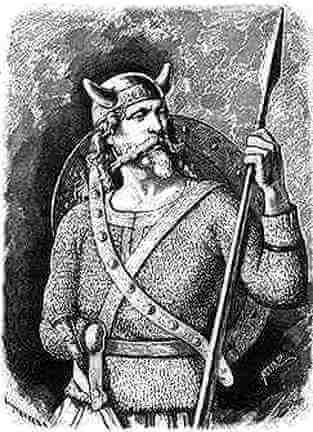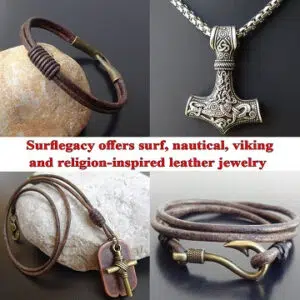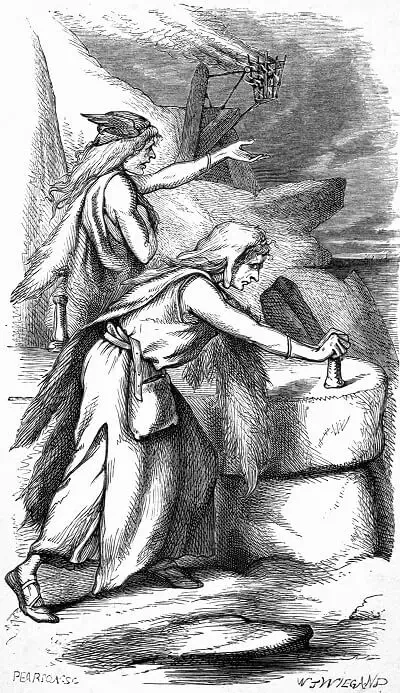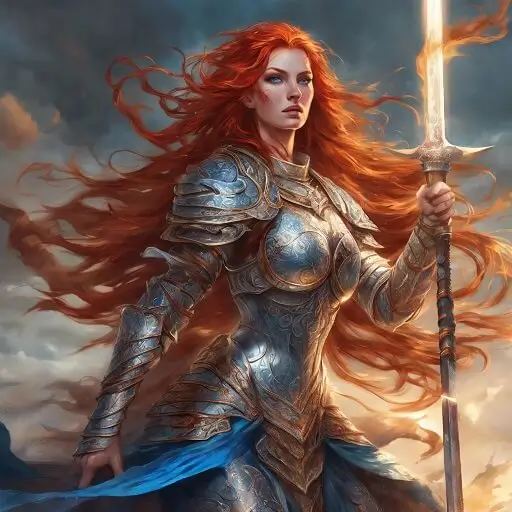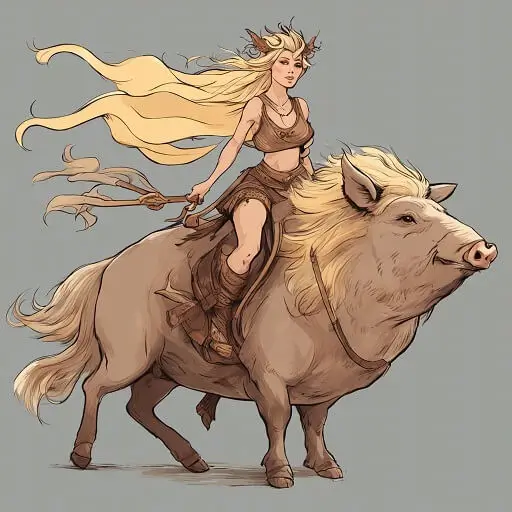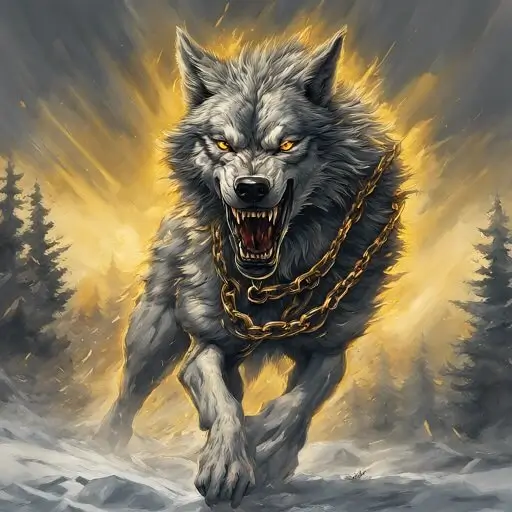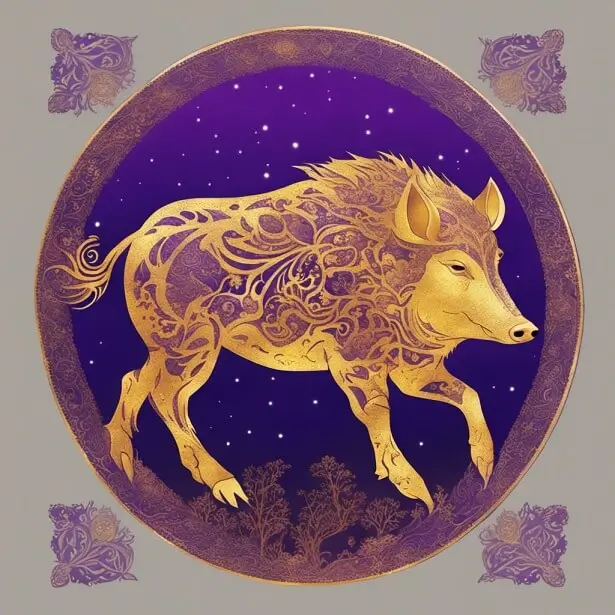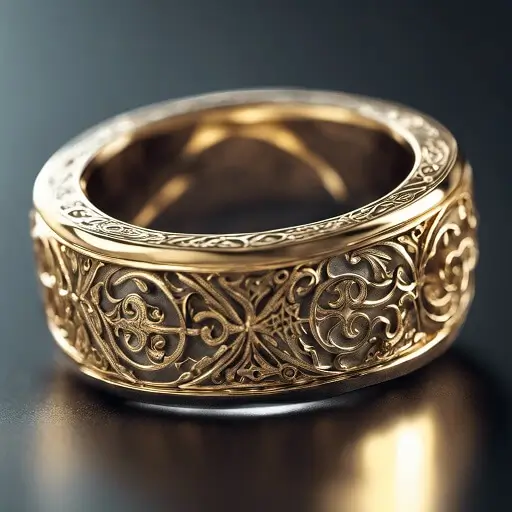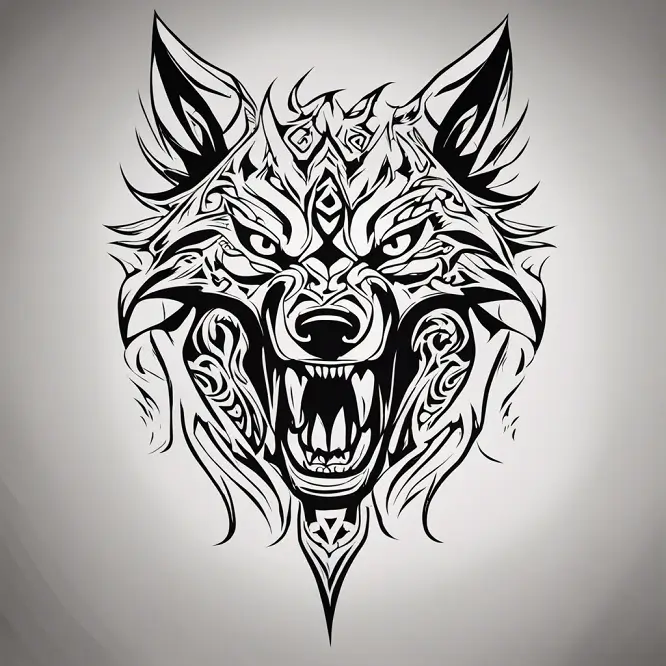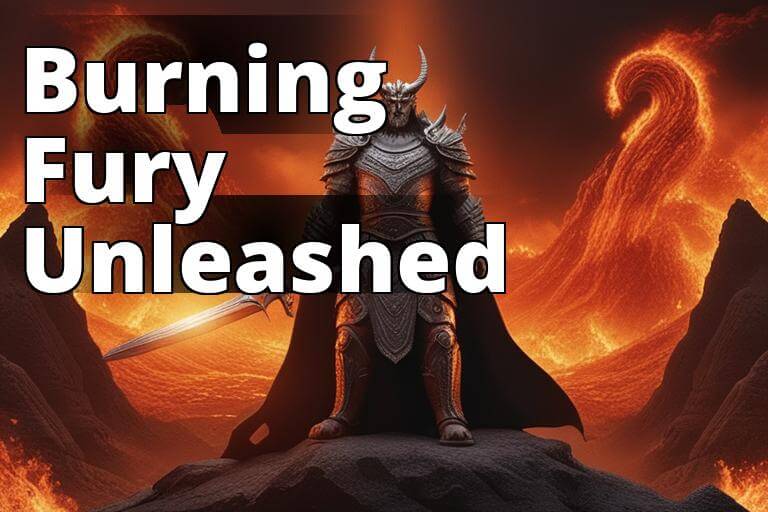Tyr in Norse mythology is the god of war and justice, along with Hodur and Odin, the king of all gods.
However, while Hodur represented discord, Tyr was more the god of just war, fought inevitably and for a just cause, and not because of an inability to dialogue that was a characteristic peculiar to Hodur, son of Odin.
In this sense, the Norse-Germanic war gods can be distinguished by the fact that each is representative of a particular aspect of war.
Thor, for example, is “synonymous” with physical and brutal combat; Odin with magical and psychological forces; and Tyr with the legal decisions and principles of justice that characterize battlefields.
Tyr and the Origin of Tuesday
The name Tuesday is derived from Old English tīwesdæg meaning the day of Tiu, the Germanic god of war equivalent in Norse mythology to Tyr.
In Latin, the days of the week are modeled on the names of the planets, and the third day of the week was named in reference to Mars the god of war, consequently, the Anglo-Saxons named it Tuesday in honor of the Germanic god of war Tiu
Tyr and the binding of Fenrir
One of the most important tales in Norse Mythology in which we find Tyr is certainly that of the encounter with the wolf Fenrir.
Fenrir was a giant wolf, son of Loki (the god of deception and cunning) and the giantess Angrbodha.
This monster with an insatiable appetite and intelligent enough to have the gift of speech, was feared by the gods, especially for the prophecy that it would be him to kill Odin during the Ragnarök, the last duel between the gods of good and evil that would take place at the end of the world.
As the son of Loki and a giantess, Fenrir was one of the Nordic symbols of chaos that the gods had the task of fighting incessantly.
The situation was terrible and the Aesir gathered together to find a solution. It was necessary to chain Fenrir and send him as far as possible from Asgard. Therefore, Odin himself had a thick and strong chain made, called Lædingr.
But it was not easy to chain Fenrir. Therefore, instead of using force, which would have been insufficient against Fenrir, the gods resorted to cunning.
The Aesir brought the chain to Fenrir and challenged him to a test of strength. The huge wolf accepted and let himself be bound. The gods were about to rejoice, when Fenrir freed himself from Lædingr with just a little tug.
After that episode, the wolf resumed undisturbed to sow terror in Asgard. It was a heavy defeat for the gods, but they did not give up and had an even more powerful chain forged, which they called Dromi.
This time they were sure that not even Fenrir’s brutal force would have been enough to break such a chain, which would have finally inhibited that horrible beast.
So, they went to the wolf again, proposing the same challenge. Fenrir, who was not stupid, noticed how heavy Dromi was and hesitated to the God’s proposal. But when they started to make fun of him and his cowardice, he was convinced and put on the big chain.
Dromi was indeed heavy and strong, and Fenrir was panting in his metal prison. The gods were already celebrating for having imprisoned the beast, but Fenrir, his pride stung, summoned all his strength and tried again to free himself. The wolf’s rage and violence were so powerful that they broke Dromi as well.
This time, too, the gods had been defeated. No chain could imprison Fenrir. But Odin still had an ace up his sleeve; if force could not defeat Fenrir, magic would be his damnation.
Odin sent one of his envoys to the Dark Elves, who lived in the bowels of the earth, and created Gleipnir, a thin and fragile string, composed of six elements: the sound of a cat’s step, the hairs of a woman’s beard, the roots of a mountain, the sinews of a bear, the breath of a fish and the spit of a bird. In these elements dwelt the magic that would bewitch Fenrir.
Once again, the gods came to Fenrir to challenge him. The wolf, however, who had inherited the cunning of his father Loki, when he saw the fragile ribbon suspected the trap and devised a stratagem to get out of the situation. He would have accepted the challenge only if one of the gods had put a hand between his jaws while he was tied up.
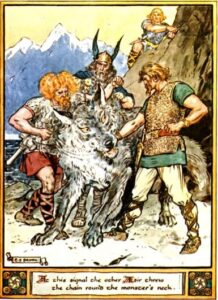
Fenrir understood that it was a trap and the gods were desperate. But at that moment, Tyr stepped forward and boldly thrust his right hand into the wolf’s jaws. Now Fenrir could no longer escape the test.
The gods bound Fenrir and the lasso tightened around the beast’s body. Fenrir struggled, but could not free himself. In a fit of rage, he severed Tyr’s hand cleanly between his jaws, without the god uttering a single groan.
All, except Tyr, shouted of joy to see the enemy finally imprisoned. Fenrir was tied to a rock, which was driven into the bowels of the earth with a giant hammer. As the last punishment, the Aesir put a sword in Fenrir’s mouth. Writhing, he continuously emitted blood and slime, which fed the underground river Von.
At the moment in which the beast would have freed itself, the Ragnarok would have been unleashed and it would have eaten Odin.
Tyr would have been eaten on that occasion by Garmr, the dog of the underworld, very similar to Fenrir but, as a dog, less fierce: it was said that it was able to become tame for those who had ingratiated with the bread soaked in blood. The same word “Garmr” means “dog” in the ancient Nordic language.
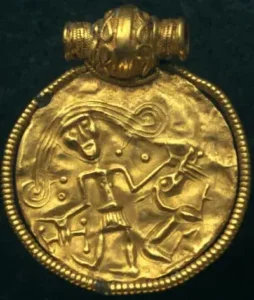
Tyr and Fenrir on an old coin
There are several hypotheses about the sacrifice of Tyr: it is possible that his gesture was a true act of courage or a mere resignation to whatever fate awaited him.
According to some theories, it could have been the punishment of fate for accepting complicity in that deception, since, as god of honor, he had no right to take part in it. According to Anglo-Saxon popular literature, this myth could be an exhortation to take responsibility at the cost of any consequence.
More about this in our conclusion.
Tyr and rune Tiwaz
The poetic Edda describes him as the son of Hymir, while in the last editions of the prose Edda it is stated that he was the son of Odin and a giantess, but there are no reliable sources and the origins of his mother are not known.
Unlike Hodur, it is to be excluded that the mother could be Frigg (Odin’s wife and then queen of the gods) even if some legends mention it as possible. According to other sources is instead the son of the giant Hymir.
Valiant in war, wise in his choices, Týr is the god to whom the warriors recommended themselves, invoking his name and engraving the rune Tiwaz (ᛏ) on their weapons. Before each battle, the warriors, quivering with tension, addressed their prayers to him and nervously clenched the spears and swords on which was engraved the name of Tyr.
Each weapon was dedicated to this god, called by the magical power of the runes, which imprinted his name and his strength in the blades that in a few moments would become red with blood.
To propitiate the victory, the warriors bent over the engraved weapons and And turning to Tyr pronounced the following words:
“You must learn the runes of victory,
if you want to achieve triumph
and engrave them on the hilt of the sword
some on the front of the blade and others on the back,
and then invoke Tyr twice.”
According to runologist Lars Magnar Enoksen, the Tiwaz rune is mentioned in a stanza of Sigrdrífumál, a poem in the Poetic Edda.
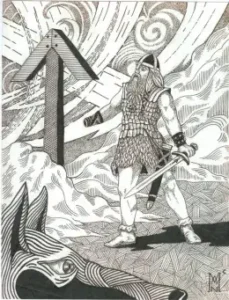
The Sigrdrífumál narrates that Sigurðr killed the dragon Fáfnir and arrived at a fortress on the top of a mountain that was burning with great fires
In the fortress he found a Valkyrie sleeping in a magical sleep, and he woke her up by opening her chest armor with his sword; the Valkyrie, named Sigrdrífa, offered him the secrets of the runes to have her freed from sleep, on condition that she showed no fear.
The valkyrie began to teach him that if he wanted to achieve victory in battle he would have to engrave the “runes of victory” on the sword and say twice the name “Týr” (the name of the Tiwaz).
The rune ᛏ Tyr is, therefore, a symbol of heroism and valor, essential for a “spiritual warrior”, the willingness to sacrifice something dear to restore the balance. Tyr is the rune of the will, motivation, full self-denial for something.
It is the strength that makes us continue despite adversity.
In Tyr, however, the will must be motivated by loyalty and not by personal greed, by the awareness that we must take responsibility for our actions.
This awareness represents spiritual enlightenment and trust in the right order of the universe.
Tyr the God of Law and Justice
Tyr was a deity very old, at least as Odin himself, and was often described with similar characteristics to both the latter and Thor: as Odin, was represented with a long white beard, while as Thor was a muscular and powerful man, sometimes depicted with his own hammer creator of lightning.
Among the peoples of Northern Europe, it was customary to invoke him before a battle, and his name was also engraved on the weapons of the soldiers as a good omen – especially on the swords, which were his symbol.
Tyr was also often identified with the god of justice, law and honor. But why would the god of law and justice also be one of the main gods of war? Well, the ancient Germanic peoples understood war and law as deeply intertwined. In fact, law could be applied to achieve victory over an opponent just as war could.
For this reason, he was also represented blind or with a blindfold as a sign of extreme impartiality, even if in some versions of the myth it is said that he was blinded by the god Ao as a punishment for not having been able to instill in human beings the sense of justice and honor.
The awareness of this, always according to the myth, would have made Tyr a resigned god, no longer motivated to fight and defend the causes of humanity. This could be one of the reasons why this deity has been supplanted over the centuries by the more combative gods Odin and Thor.
Not only that, but it could also explain why Tyr was described as always ready to sacrifice in order to make good triumph: the cause could be either his great courage or extreme resignation in the face of events.
In fact, in the tales of Norse mythology is often recurring the theme of sacrifice for a good cause: just think of the fact that Odin had to give an eye to acquire knowledge, and the god Heimdallr an ear to receive an infallible hearing from the other.
Tyr the one-armed God
Well, even Tyr is no exception: it was said that he was without a hand – or even without an arm – for having given it to the wolf Fenrir in order to save the lives of other gods and to make possible the maintenance of the cosmic order.
This justifies why Tyr was also called “the left-handed god” or even “the wounded god”.
In this regard, Tyr also represented justice and law, as can be seen from the tale of “The Binding of Fenrir”; which tells of Tyr’s sacrifice to the wolf Fenrir.
Other characteristics that were attributed to Tyr were a great reserve and the tendency to isolate themselves, especially in the mountains or in places where you could see the sky.
For this reason was called “Tyrol” the mountainous region shared between Austria and Italy, surrounded by the Alps: the name “Tyrol” (in German Tirol) could derive from the combination of the names Tyr and Ull. The latter, called “Ullr” in Norse, was a deity of the mountains.
What lesson we can learn from Tyr?
Certainly, that sacrifice to better oneself is a good thing. Better yet, though, is to sacrifice in a way that benefits others as well. This is the essence of the legacy of the message of Tyr who, by giving up his hand, made the world safer and earned a place of honor among all the gods.
He thus earned the respect of his peers and was elevated among them as the bravest of them all. Sure, Thor was the strongest, but how brave are you really when your strength is second to none?
Tyr offered to put his hand in Fenrir’s mouth and never went back on his word. In doing so, he taught us to never go back on our word. Once we give our word, it must be kept.
While Odin was willing to sacrifice himself because he wanted more knowledge for himself, even if it was then made available to others, Tyr sacrificed himself to prevent his community from encountering any danger…Only by the sacrifice of the individual can benefits be gained for all.
Tyr certainly didn’t want to lose his hand to Fenrir that day, but when the community needed him, he stepped up. Will you be the kind of man who serves only when it’s easy and convenient? Or, like Tyr, will you put yourself at the service of others, even when you know it will cost you something?
Final thoughts
Tyr was certainly not forgotten in the Viking Age, but it is also fair and right to say that he was not held in the same regard for the Vikings as Odin and Thor.
Tyr was still known as the bravest of gods. He was, after all, the only god with the courage to do what Fenrir asked, and he was the only one brave enough to bring the monster its food after it had been chained.
Why therefore Tyr with the Vikings become less popular? Why for the Nordic peoples it was much more? Let’s say that for the Germanic peoples the battle was of fundamental importance and at the same time was also courage, justice, and honor.
In the Vikings, courage in battle was important, but not like their predecessors, because over time the Vikings had become skilled raiders and looters and fewer soldiers in the field, and here’s how they began to take hold of the importance not only of strength, but also of tactical intelligence and strategy as well as a certain amount of wisdom, characteristics that we find in Odin and Thor.
For this reason, Tyr was relegated to a more marginal role in the life of the Vikings.
Buy Norse Jewelry
Are passionate about Norse Mythology or Viking Culture?
Surflegacy is the final destination for the modern Norse fan, every single item is hand-assembled in our Workshop in Italy. For more Norse Jewelry visit our store by clicking on the link image below.

